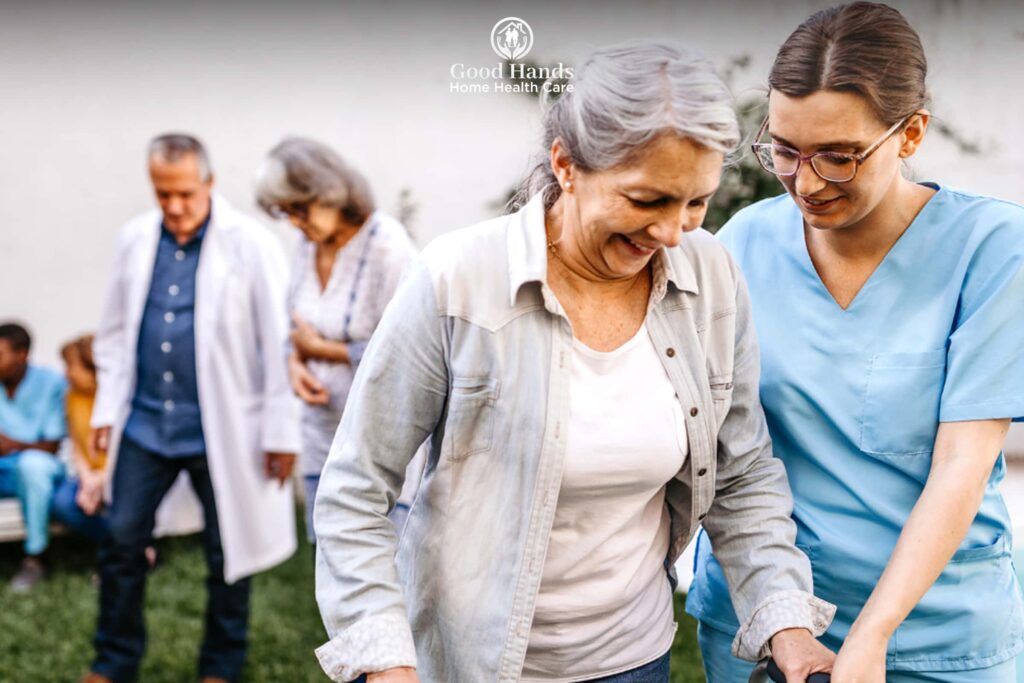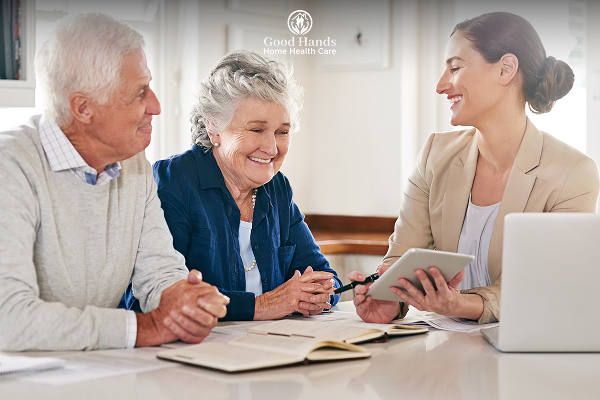Blog

How to Stay Mobile and Independent as You Age

How to Stay Mobile and Independent as You Age
Preserving mobility becomes increasingly vital as we transition into our senior years. At Good Hands Home Health Care, we recognize that regular, consistent movement throughout your day can create remarkable improvements in maintaining your independence. Systematic stretching, resistance exercises, and equilibrium training collectively enhance joint flexibility while fostering the self-assurance needed to handle daily activities with confidence and ease.
Why Mobility Matters After 60
Grasping how to stay mobile after 60 is essential because physical mobility directly influences your overall life quality. When movement remains unrestricted, you retain control over fundamental daily tasks—from cooking nutritious meals to managing personal care. This physical self-sufficiency creates a beneficial cycle, enhancing emotional wellness and cognitive function while decreasing dependence on external assistance.
Physical constraints typically emerge gradually, making them challenging to identify until routine activities become difficult. Common mobility challenges include age-related muscle reduction (sarcopenia), joint rigidity, and compromised balance. Fortunately, proactive movement protocols can substantially decelerate these natural changes. Implementing senior independence tips before mobility limitations become pronounced allows you to preserve your preferred lifestyle and continue engaging in fulfilling activities that provide satisfaction and meaning.
Daily Mobility Exercises for Seniors
Incorporating gentle, consistent movement into your daily routine can work wonders for maintaining and even improving your range of motion. Effective mobility exercises for elderly adults don’t need to be strenuous—rather, they should focus on consistency and proper technique.
Start your day with a morning stretching sequence that awakens your body. This might include gentle neck rolls to release tension, shoulder circles to improve upper body mobility, and side bends to maintain torso flexibility. These movements promote joint flexibility that seniors need while enhancing circulation throughout the body. For those with balance concerns or limited mobility, seated exercises offer an excellent alternative. Try ankle rotations, gentle knee lifts, and seated torso twists to maintain joint health without standing. As your comfort increases, add standing exercises with proper support nearby—heel-to-toe walking, supported leg lifts, and modified lunges can significantly improve stability and walking confidence.
Preventing Stiffness and Improving Flexibility
That familiar morning rigidity doesn’t need to become your accepted reality. Stiffness typically develops when joints remain stationary for extended periods, causing surrounding tissues to contract. To prevent stiffness in old age, prioritize movement throughout your waking hours, even if it’s simply standing up and gently stretching every half hour while enjoying television or reading material.
Top Techniques to Maintain Flexibility:
- Utilize warm water therapy (showers or baths) to relax joints before stretching sessions.
- Engage in gentle range-of-motion exercises for each major joint daily.
- Sustain stretches for 20-30 seconds without jerking or forcing movement.
- Dedicate extra attention to commonly problematic areas such as shoulders, hips, and knees.
- Explore chair yoga or modified stretching techniques if balance presents concerns.
The regularity of your movement matters more than its intensity. Even during low-energy days, performing gentle stretches helps preserve the joint flexibility seniors need. Remember that flexibility improvements manifest gradually—progress emerges from consistent practice over weeks and months, not days. Numerous clients discover that morning routines alleviate stiffness while evening stretching promotes improved sleep quality and reduced discomfort upon awakening.
Lifestyle Habits That Support Independence
Maintaining mobility extends beyond formalized exercise routines. Senior independence tips that incorporate movement into everyday activities provide cumulative advantages throughout your day. Consider parking slightly farther from destinations, taking brief walks following meals, or standing during telephone conversations—these minor adjustments accumulate significantly over time.
Nutrition plays an equally crucial role in supporting mobility. Foods abundant in omega-3 fatty acids, antioxidants, and calcium help sustain joint health and muscle functionality. Active aging tips from nutritional experts emphasize proper hydration, sufficient protein consumption, and inclusion of anti-inflammatory foods like colorful berries, dark leafy greens, and omega-rich fish. These dietary selections complement your movement practices and help establish the robust foundation necessary for enduring independence.
When to Seek Professional Guidance
Understanding how to stay mobile after 60 sometimes necessitates specialized expertise, particularly when confronting specific health challenges. Professional support becomes invaluable when you notice increasing difficulty with everyday movements such as rising from seated positions, navigating staircases, or maintaining equilibrium while walking on uneven terrain.
When to Consult with a Movement Specialist:
- Experiencing discomfort that restricts your normal activities.
- Noticing significant decline in strength or balance capabilities.
- Navigating recovery from surgical procedures or injuries.
- Feeling uncertain about which exercises are appropriate for your condition.
- Finding it challenging to maintain consistency with home exercise regimens.
Collaborating with physical therapists, occupational specialists, or geriatric fitness experts provides customized strategies tailored to your individual requirements. At Good Hands Home Health Care, we connect clients with qualified professionals who comprehend the unique challenges of aging physiology. These specialists can recommend appropriate mobility aids when necessary, design effective home exercise programs, and teach proper movement techniques that minimize injury risk while maximizing independence.
Final Tips for Active Aging
Embracing active aging tips with an optimistic mindset significantly influences your mobility journey. Rather than concentrating on limitations, celebrate your body’s current capabilities while working steadily toward future improvements. Establishing achievable objectives—such as extending walking duration by one minute daily or decreasing sedentary time by half an hour—creates momentum that builds confidence.
Community connections provide powerful motivation for maintaining mobility. Consider joining senior fitness classes, walking groups, or virtual exercise communities where shared experiences foster accountability and encouragement. Applying mobility exercises for elderly participants proves most effective when implemented within supportive environments where achievements receive recognition. Remember that movement should bring enjoyment—incorporate activities you genuinely anticipate, whether that’s dancing, gardening, swimming, or simply exploring your neighborhood on foot.
Take the First Step Toward Better Mobility Today
Don’t allow physical limitations to restrict your independent lifestyle. Contact Good Hands Home Health Care for a personalized mobility assessment and discover how our experienced professionals can help you maintain your active lifestyle. Our compassionate team stands ready to support your journey toward confident, independent living.









